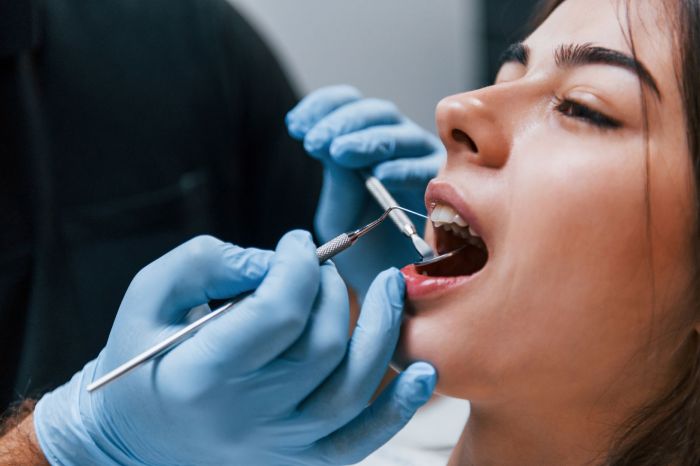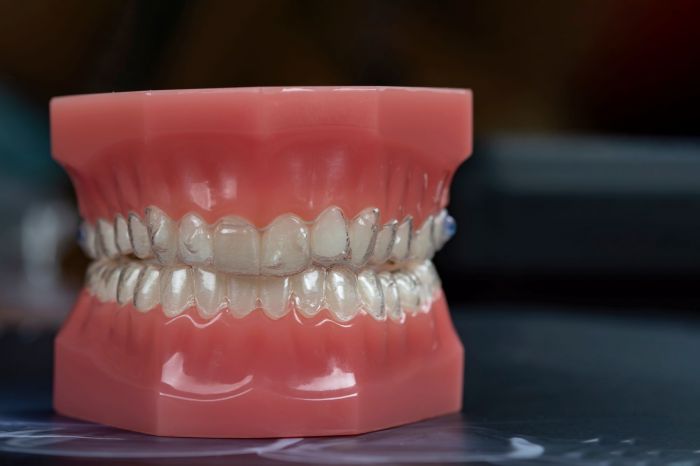
A camera-ready smile isn’t sorcery - it’s often the result of a wafer-thin veneer (about the thickness of a contact lens) - hiding chips, stains, spacing, and even slight crowding. Yet, the first question most people ask isn’t about shade or shape; it’s ‘How much will this set me back?’
Below is an indepth look at 2025 pricing, the forces that push it up or down - and the long-term math you should run before handing over your credit card.
Veneer Varieties - And Why Type Dictates Cost
Cosmetic dentists work with three main families of veneers and the material you pick drives everything from sticker price to upkeep:
Porcelain Veneers
Porcelain veneers are built from a layered glass-ceramic that mimics the way enamel passes light; they also (arguably) win the realism contest if natural looking veneers are what you’re after. As of 2025, they typically run at around US $900-2,500 per tooth in the United States, a price range echoed in Canada, the U.K. and Australia - once you adjust for exchange rates.
The big upside to porcelain veneers is lifespan: multiple long-term studies report 10-year survival rates well above 90% and many sets cruise past the 15-year mark with only the occasional polish or micro-repair.
Composite-Resin Veneers
Composite-resin veneers are sculpted chairside (or fabricated in a lab and bonded later) from the same tooth-coloured material used for white fillings. They’re friendlier on the wallet - about US $250-1,500 per tooth - but the surface polish can dull faster and most patients need a refresh after five to seven years.
No-Prep or ‘Contact-Lens’ Veneers
No-prep or ‘contact-lens’ veneers (popular brand names include Lumineers or Emax Ultra-Thin) come in at roughly US $800-2,000 per tooth. Because they’re wafer-slim, the dentist can often skip the drilling and leave your natural enamel almost entirely intact - a major plus if you ever want the option of removing or updating them later. Longevity mirrors porcelain when they’re bonded to ideal teeth, but they aren’t suitable for every bite or for masking very dark stains.
Weighing Up the Options
Porcelain still wins on durability and lifelike sparkle, composite shines for quick, budget-friendly touch-ups and no-prep veneers split the difference for people with near-perfect tooth alignment who dread the sound of the drill.
The 2025 Price Snapshot by Region
Here’s how veneer prices stack up around the world in 2025:
United States
National averages mirror the ranges above, but a celebrity cosmetic dentist in Los Angeles can quote as much as US $3,000+ per tooth for hand-layered porcelain.
United Kingdom
Expect £700-£1,400 per porcelain unit and £250-£850 for composite in major cities, such as London or Manchester.
Australia
Porcelain veneers start around AUS $1,000 per tooth, with a full 20-tooth ‘Hollywood Smile’ set nudging AUS $20,000.
Dental-Tourism Hot Spots
Clinics in Turkey advertise ceramic veneers from US $180 per tooth and package deals (20 zirconia units, hotel, drivers etc.) around US $4,400 - but after-care and redo costs land back on you at home.
Why Two People Can Get Two Very Different Quotes
A handful of variables can double - or halve - your final bill:
- Geography & overheads: Rent in Beverly Hills is not rent in rural Iowa
- Dentist pedigree: AACD accreditation, digital-smile-design credentials and a chunky Instagram portfolio command premium fees
- Number of ‘smile-zone’ teeth: Most people show eight upper teeth when they grin; a truly ‘Hollywood’ smile can mean 8-10 uppers plus the lowers that peek out in speech
- Tech stack: Practices using chairside CAD/CAM mills, 3-D facial scanners and AI-driven smile simulations amortize six-figure gadgets into each case
- Economic drift: The U.S. Bureau of Labor Statistics pegs dental-service inflation at 2.2% year-over-year as of April 2025
- Add-on procedures: Gum contouring (US $50-$350 per tooth) or laser whitening (US $200-$800) can drive up totals far beyond the veneer sticker price
The Hidden Line-Items No One Mentions Until Checkout
Beyond the headline price, watch for these sneaky extras:
- Comprehensive consult or digital scan: US $100-$300
- X-rays/CBCT & impression kits: US $150-$500
- Diagnostic wax-up or 3-D printed mock-up: US $250-$600 - lets you ‘test-drive’ the new smile
- Temporaries while the lab works: US $100-$400 per arch if you need to look presentable between visits
- Occlusal/night guard: US $150-$400 - mandatory for grinders to keep chips at bay
- Follow-up texture or bite tweaks: Often billed in 15-minute blocks
- Pro move: Ask for an itemised, signed treatment plan that locks in fees for at least 90 days

Timeline and Cash-Flow Reality Check
A typical veneer case follows this general pathway of appointments and payments:
Week 0
Digital design & shade photos. Deposit required is often 30% of total.
Week 1
Tooth prep & temporaries (for traditional porcelain). Expect to pay another 30-40%.
Week 3
Lab delivers ceramics; final bonding appointment. Remaining balance due.
Week 4+
Bite checks, polish visits, possible night-guard impression; budget US $150-$400 here.
Financing outfits, such as CareCredit, offer 6- to 24-month 0% APR promos for qualifying patients, so it pays to do your homework when deciding how (and when) to foot the bill.
Insurance & Tax Angles
Before banking on coverage, note these country-specific realities:
- Dental insurance: Because veneers are tagged elective, carriers rarely pay unless a tooth is fractured or severely eroded. Documentation of trauma sometimes unlocks partial coverage
- HSAs & FSAs: In the U.S., cosmetic work is generally not an eligible expense - check plan language
- Australia & UK: Private extras-cover policies likewise exclude purely aesthetic veneers; if they’re part of trauma reconstruction, partial benefit codes may apply. Always request a pre-determination letter
Long-Term Cost of Ownership
The invoice you get on veneer-day is really just a down-payment; the true price of your new smile unfolds over decades. Here’s how the math usually plays out.
Most studies put porcelain veneers at a 10- to 15-year lifespan, with survival rates still over 90% a decade after placement. Composite veneers look great in year one but tend to dull, stain or chip sooner - it’s best to expect to need a fresh set every five to seven years.
Here’s a hypothetical case study for consideration:
- Choose eight composites at US $600 each, comfortably within the 2025 U.S. composite range of US $250-1,500. Ticket price day one: US $4,800. But composites usually need replacing twice in twenty years (let’s say year 6 and year 12). Assuming replacement fees stay level - which inflation rarely allows for - the lifetime tab climbs to roughly US $14,400 before minor repairs
Porcelain feels pricier at checkout, yet by the time composites hit their second or third replacement, the cost gap narrows or even flips. Factor in the downtime, extra appointments and the cosmetic ‘dip’ each time resin surfaces stain and porcelain’s bigger sticker often wins the long-game value race - especially if you grind your teeth or love red wine and coffee.
Remember: this is an illustrative scenario, not an iron-clad quote. Your out-of-pockets will vary with exchange rates, lab fees and how gently (or aggressively) you treat your teeth, but planning for replacements now avoids wallet-shock later.

Alternatives When Veneers Blow Up Your Budget
If full veneers aren’t feasible right now, consider these wallet-friendlier fixes:
Pro-Strength Whitening
Best for stains only; one in-office visit costs US $200-$800.
Dental Bonding
A syringe of resin can close a small gap or chip for US $300-$600 per tooth, but it stains easier than composite veneers.
Clear Aligners (Invisalign, Spark, AngelAlign)
US $3,000-$8,000 to straighten, then decide if you still want veneers - many people don’t afterward.
‘Add-On’ Injectable Composite (Bioclear)
Uses warmed flowable resin and Mylar forms to bulk out black-triangles at roughly half the veneer cost; longevity sits between bonding and full composite veneers.
The Social-Media Price Squeeze
Instagram’s #veneers and TikTok’s smile-makeover montages are fuelling record demand - dentists worldwide report a jump in cosmetic enquiries, which keeps fees firm despite broader inflation pressure; analysts expect the global cosmetic-dentistry market to hit US $27.9 billion by 2030, growing at ~6.9% CAGR.
Even with that tidal wave of interest, new tech is nudging prices slightly downward in some clinics: AI-driven smile design and in-house 3-D printing are shaving lab expenses, allowing practices to offer up bundle discounts or same-day ceramic veneers.

Are Veneers Worth It?
Ultimately, of course, it’s a personal choice. Balance the upsides and downsides before you commit:
Upsides
- Speed: Skip two years in braces; finish in three weeks
- Stain armor: Porcelain shrugs off espresso better than natural enamel
- Confidence dividend: A Yale study linked smile satisfaction to measurably higher self-reported wellbeing (and even hiring appeal)
Downsides
- Commitment: Once enamel is prepped, you’re married to some kind of cover forever
- Fragility: Crunch ice, bite pens or forget your night-guard and chips happen
- Sticker shock redux: Composite looks cheap until you pay for the third set
If your driving pain-point is colour only, consider whitening first; if it’s spacing, try aligners. Veneers shine when you need a multi-factor fix - shape, colour, symmetry - and you accept the upkeep.
Five Questions to Ask at Your Consultation
- How many veneer cases do you place per month? (Skill is repetition)
- Can I see unretouched before-and-afters of similar cases? (Not filtered Instagram shots)
- What lab or in-house system will fabricate mine? (Quality materials = longer life)
- What happens if one debonds in the first two years? (Look for a written warranty)
- Will you create a digital or wax mock-up so I can preview the look? (Try before you commit)
The Bottom Line
A single porcelain veneer set currently ranges from around US $925-$2,500 depending on where you live and who’s wielding the drill. While that isn’t pocket change, remember you’re buying a decade-plus of daily face time in the mirror - and in photos, interviews and first dates.
Once you’re ready to take the plunge, book two consultations - one local and one a bit farther afield - to compare treatment plans. Bring this guide, demand an itemised quote and sleep on it; your upgraded grin should feel as good to your wallet as it does to your self-esteem.









